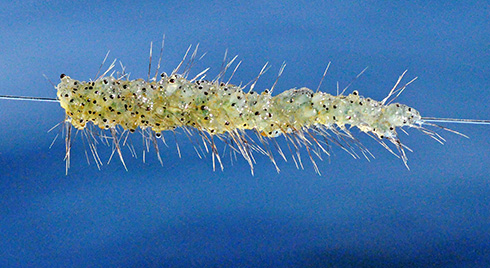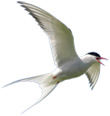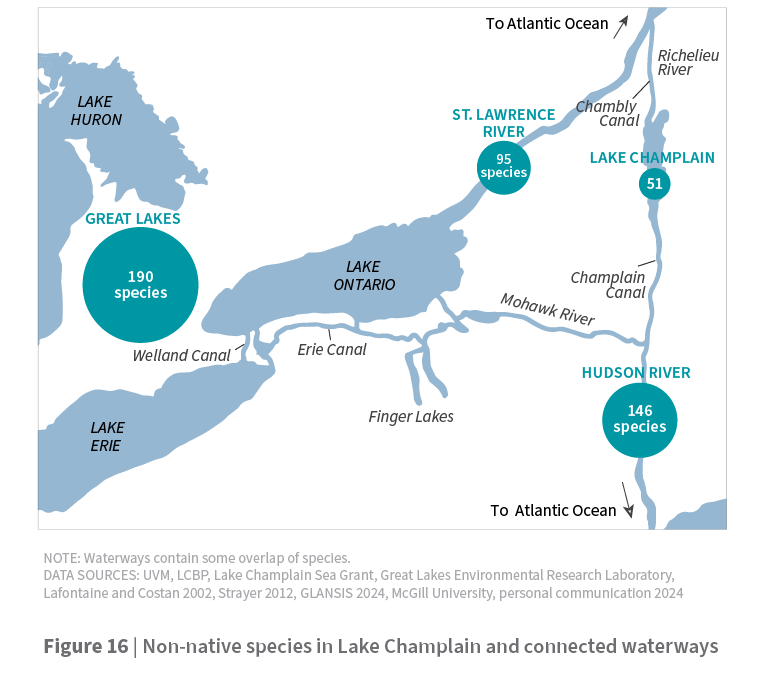Aquatic Invasive Species

Spiny waterflea is the most recent aquatic invasive species to be found in Lake Champlain. Photo courtesy of Lake George Association.
Aquatic invasive species (AIS) are non-native species that cause harm to the environment, the economy, or human health. These plants and animals can threaten the Lake Champlain Basin’s native fish, wildlife and plants, and impede recreational activities. As of 2017, Lake Champlain is home to 50 aquatic non-native and invasive species. Of these 50 known species in the Lake, several are high priorities for management:

Zebra mussels encrust an anchor from Missisquoi Bay. Photo courtesy of Pierre Leduc.
- Alewife
- Asian Clam
- Eurasian Watermilfoil
- Japanese Knotweed
- Purple Loosestrife
- Water Chestnut
- Zebra Mussel
- Spiny Water Flea
AIS have entered Lake Champlain via the Champlain Canal, the Richelieu River and over land, primarily through human activities such as boating and bait transport. Spiny waterflea is the most recent arrival. These small crustaceans arrived in the Great Lakes in the 1980s and were first detected in Lake Champlain in 2014. The waterways connected to the Lake are sources of many more potential invasive species that have not arrived yet.
The Lake Champlain management plan Opportunities for Action calls for comprehensive management of aquatic invasive species, including continued control, research, and monitoring efforts. The LCBP and its partners have worked to identify disruptive nuisance species, evaluate management alternatives, and recommend appropriate controls to minimize the impacts of invasives. In 2005, the LCBP and many other partners developed the Lake Champlain Basin Aquatic Nuisance Species Management Plan.
The LCBP operated a boat launch steward program at launches around the Lake (view the boat launch map) for the tenth season in 2017. The Vermont Department of Environmental Conservation (VT DEC) monitors the Lake and its tributaries (view the map of lake and tributary monitoring sites) for zebra mussels and coordinates the water chestnut control program using funding from the Lake Champlain Basin Program, the U.S. Army Corps of Engineers, VT DEC and others. The U.S. Fish & Wildlife Service, in cooperation with New York and Vermont, is working on several sea lamprey control and fish stocking programs.
Everyone can help to prevent the spread of nuisance nonnative aquatic plants and animals when recreating on Lake Champlain and other lakes. Citizens can learn to identify nuisance species and report new infestations to the Lake Champlain Basin Program or state agencies. Boaters and anglers can help prevent the spread of invasive species by carefully cleaning and inspecting boats and properly disposing of bait fish.
More on Aquatic Invasive Species
- LCBP Fact Sheet #1 – Zebra Mussels
- Aquatic Nuisance Species in Vermont (VT DEC)
- Aquatic Nuisance Species Panel (Great Lakes Commission)
- Aquatic Invasive Species Campaigns (Minnesota Sea Grant)
- Lake Champlain Sea Grant
- National Aquatic Nuisance Species Task Force
- New York Invasive Species Information
AIS Maps
LCBP Links

LCBP Home
A number of aquatic invasive species are “on the doorstep” of Lake Champlain.
Learn More →

State of the Lake
The LCBP and partners take a variety of actions to prevent the arrival and spread of aquatic invasive species.
Learn more →

Opportunities for Action
Control of aquatic invasive species is one of the highest priorities in the Lake Champlain management plan Opportunities for Action.
Find out more →


 Lake Champlain Basin Program
Lake Champlain Basin Program